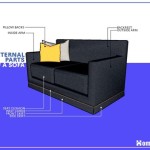How To Prevent Cat Scratching Leather Sofa
Protecting a leather sofa from cat scratches requires a multi-pronged approach that addresses feline scratching behavior while also safeguarding the leather itself. This involves providing appropriate scratching alternatives, deterring cats from the sofa, and employing protective measures.
Provide Appealing Scratching Posts
Cats scratch to maintain claw health, mark territory, and release energy. Providing appealing scratching posts caters to these needs and redirects scratching behavior away from furniture. Opt for a variety of posts made from different materials like sisal, carpet, and wood. Vertical posts should be tall enough for the cat to stretch fully while scratching, while horizontal posts cater to cats who prefer scratching on a flat surface. Placement is crucial; place scratching posts near the sofa initially, gradually moving them to more desirable locations as the cat habituates.
Regularly refresh scratching posts to maintain their appeal. Worn posts can be revitalized by replacing the scratching surface or rubbing catnip on them. Observing the cat’s scratching preferences can help determine the ideal type and placement of posts. For instance, if the cat favors scratching the sofa’s arms, a vertical post positioned nearby can be a suitable substitute.
Deter Cats from the Sofa
Creating an environment that discourages scratching the sofa is equally important. Cats dislike certain textures and scents, which can be strategically used. Commercially available cat deterrent sprays are formulated with scents unpleasant to cats but undetectable to humans. These sprays can be applied to the sofa, focusing on areas frequently targeted by the cat.
Alternatively, homemade deterrents can be created using citrus peels or diluted essential oils like citronella or lavender. Place citrus peels on the sofa or lightly mist the surface with a mixture of water and a few drops of essential oil. Always test any deterrent on an inconspicuous area of the leather first to ensure it does not damage the material.
Sticky tape or aluminum foil placed on the sofa can also deter scratching. Cats dislike the sticky sensation on their paws or the sound of foil crinkling. These methods offer a temporary solution and can be removed once the cat has lost interest in scratching the sofa.
Employ Protective Measures
While deterrents and scratching posts are essential, physically protecting the sofa provides an additional layer of defense. Sofa covers specifically designed for pets offer a durable barrier against scratches. These covers are typically made from durable, washable materials that resist claws. Choose a cover that fits snugly to prevent it from shifting and exposing the leather underneath.
Leather conditioners can help maintain the sofa's integrity and make it less susceptible to damage. Regularly conditioning the leather keeps it supple and less likely to tear or puncture from scratches. Choose a conditioner specifically designed for leather furniture and follow the manufacturer’s instructions for application.
Clear plastic adhesive sheets can be applied to vulnerable areas of the sofa, such as the arms and corners. These sheets are virtually invisible and provide a protective layer against scratches without altering the sofa's appearance. They are a less obtrusive alternative to sofa covers and can be easily replaced when necessary.
Trim Claws Regularly
Regular claw trimming reduces the sharpness of the cat's claws, minimizing the damage they can inflict on the sofa. Trimming should be done carefully to avoid cutting the quick, the pink part of the claw containing nerves and blood vessels. If unsure about trimming the claws, consult a veterinarian or a professional groomer for guidance.
Introducing claw caps provides an extra layer of protection. These soft plastic caps are glued onto the cat’s claws, blunting their sharp tips. Claw caps are available in various sizes and colors and typically last for several weeks before needing replacement.
Positive Reinforcement
Encouraging the cat to use scratching posts and rewarding appropriate behavior is crucial. When the cat uses a scratching post, offer praise and treats. This positive reinforcement associates scratching posts with pleasurable experiences, making them more appealing than the sofa. Avoid scolding or punishing the cat for scratching the sofa, as this can create anxiety and potentially exacerbate the issue.

How To Fix Cat Scratch On Leather Couch Cozy Living

How To Repair Cat Scratched Leather The Interior Diyer

How To Repair Cat Scratched Leather The Interior Diyer

How To Keep Cats From Scratching Furniture Feliway

Do Cats Scratch Leather Reasons Prevention Hepper

How To Protect Leather Furniture From Pets

Life This One Ingredient Will Get Rid Of Ches In Wood Leather

Easy Cat Scratch Leather Repair

Repair Dog Cat Scratches On Leather

How To Repair Cat Scratches On Leather The Colour Doctor








